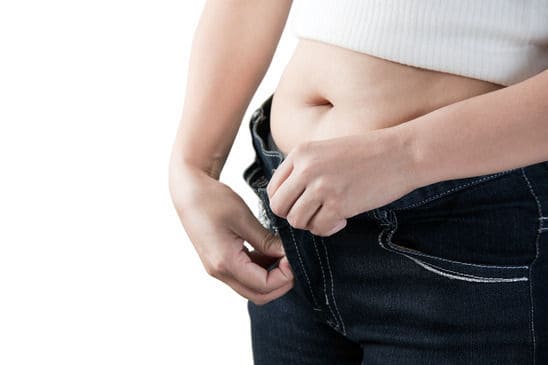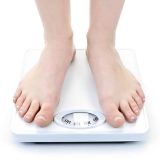

On Thursday, November 22nd, America embarked on that annual 40 days of excess that constitutes our national holiday season. It begins with Thanksgiving and ends on January 2 when, inevitably, new gym memberships soar as people react in a spasm of national guilt over the pounds that were gained during our collective endeavor to bring peace on earth and good will toward men through gastronomic overindulgence. And, lest you think this article will be a preemptive finger-wagging, I freely admit that I will be among those who succumb to the myriad temptations that will pass my way. What is important to understand is that the impact of too much rich food and drink can be cumulative from one year to the next resulting in an expanding waistline and declining vitality that are the precursors to more serious health problems. The solution is to practice moderation and develop a strategy to help your body recover from the revelry of the holidays. Here is a plan that works…and it starts with the liver.
This Is Your Liver
Your liver is a large, two-lobed organ that is located behind the ribs in the upper right quadrant of your abdomen. It is located near the gallbladder, pancreas and intestines and works with these organs in the digestion, absorption and processing of your food. Its main job is to filter the blood that passes through it from the digestive tract. It also is responsible for detoxifying chemicals in the blood, metabolizing drugs in the system, protein synthesis and it takes part in blood glucose management. In addition, one of your liver’s most important functions is as the primary fat removal system in the body. It regulates your body’s fat metabolism through an intricate set of biochemical processes allowing it to function as both a fat-burner and a fat-pump. It is a truly amazing organ that is absolutely essential for your weight management and overall health.
This Is Your Liver on Fat
When you expose your liver to a steady diet that is high in fat and sugar and low in fiber, you essentially slow down the entire digestive and metabolic processes in your body and create a situation that begins to overwhelm your liver’s ability to carry out its many important functions. This causes it to become congested with fat. Once those fat cells are lodged in your liver they will further impede its function, creating a feedback cycle of increasing levels of stored fat that impede fat metabolism – which leads to more stored fat, and so on and so on. Add to that picture the toxic load from extra alcohol intake that often accompanies holiday celebrations and you will quickly create a condition known as “fatty liver.”
Now, if you go into the holidays in pretty good shape, with little excess body fat and a generally healthy nutritional lifestyle, this liver malfunction will pretty much clear itself up as you go back to your normal habits of diet and exercise. The problem arises when the “fatty liver” condition already exists. In these cases, an already stressed fat-clearing system is confronted with another load of fat and toxins that it can no longer handle. More just gets dumped onto the pile, further hindering normal liver function. This condition is far more prevalent in the U.S. than one might think.
The Centers for Disease control estimate that almost 30 million Americans have nonalcoholic fatty liver disease. This is the advanced stage of the “fatty liver” condition that I described earlier and is associated with the following conditions: type II diabetes, insulin resistance, coronary heart disease, cerebrovascular disease, high cholesterol, high blood pressure, gout, gallstones, colon cancer and sleep apnea to name a few. Uncorrected, this condition can lead to cirrhosis, liver cancer and/or liver failure.
More sobering is the fact that this condition often goes undetected because it has very few overt symptoms that would cause one to seek medical care. However, there are some clues that your body may be giving to signal that an early fatty liver condition is occurring. Here’s what to look for:
-
- Excess weight around the abdominal area (pot belly)
- A roll of fat on the upper abdomen
- Cellulite in the buttocks, thighs, flanks and arms
- Fatigue/lack of energy
- High cholesterol
One only has to look around to see that the “fatty liver” condition is very common, very likely in the person staring back from the mirror. The good news is that the early fatty liver condition is, in itself, relatively harmless – it just keeps you from losing weight no matter how much you diet and exercise – and is readily reversible. The danger comes from years and decades of this condition progressing to the disease state.
So, What to Do?
The answer is simple, though not necessarily easy. As with most prescriptions to manage weight, lifestyle change is the key. Do these things and you will help your liver quickly decongest itself and clear out the fat:
- Eat foods rich in fiber, especially fruits, vegetables and seeds (i.e. ground flaxseeds)
- Minimize or eliminate alcohol – this is the most powerful liver fattener
- Ease up on the saturated fats in your diet
- Reduce the amount of carbohydrates and sweets in your diet
- Exercise vigorously at least three times per week
- Drink plenty of water
- Use a high quality liver cleansing supplement containing milk thistle
- Be patient – it doesn’t happen overnight
- Avoid other toxins, such as medications, when possible
Depending on how much fat has accumulated in your liver, it may take just a few weeks or many months to fully clean and rejuvenate your liver. However, it is well worth the effort as the rewards of improved vitality, healthy weight, longer life and the ability to quickly recover from episodes of indulgence will soon reveal. So, by all means, enjoy your holiday delights, practice moderation and place your liver at the top of your resolutions list.




